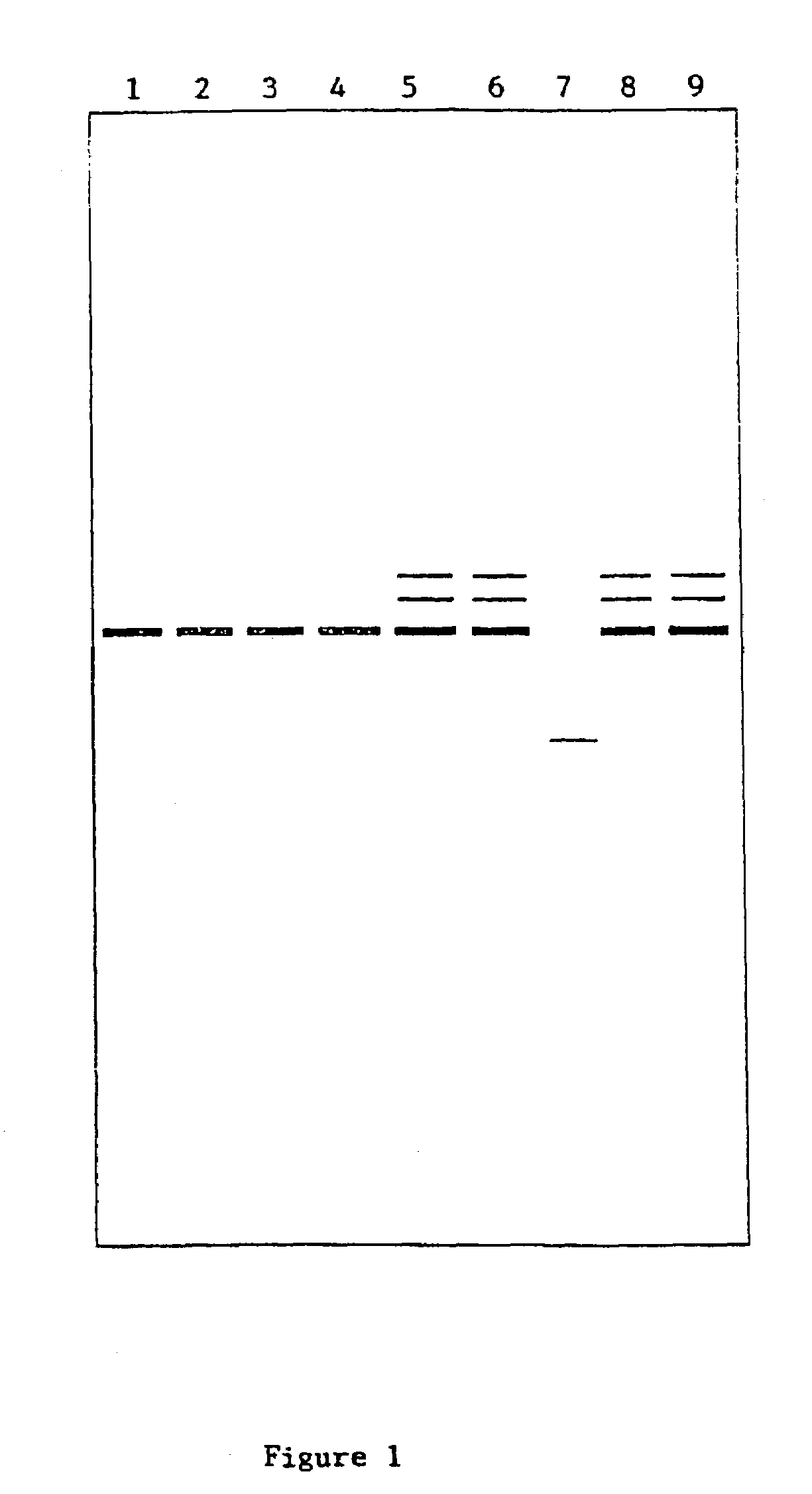Mutation within the connexin 26 gene responsible for prelingual non-syndromic deafness and method of detection
a technology of connexin 26 and gene, applied in the field of autosomal prelingual nonsyndromic deafness mutations, can solve the problems of impede language acquisition, not being able to recognize whether the hearing loss is present, and high genetic heterogeneity of the condition,
- Summary
- Abstract
- Description
- Claims
- Application Information
AI Technical Summary
Benefits of technology
Problems solved by technology
Method used
Image
Examples
example 1
Patients
[0053]Thirty-five affected families from various geographical regions, mainly France, New Zealand and Australia, Tunisia and Lebanon, were studied. They could be classified into three categories: (1) consanguineous families each having a significant linkage to the DFNB1 locus; (2) small non-consanguineous families in which linkage analysis was compatible with the involvement of DFNB1; and (3) small families in which no linkage analysis had been undertaken.
[0054]The first category consists of six large families living in geographically isolated regions. Five were from Tunisia, two from the north and three from the south. Linkage to the DFNB1 locus in the two families from northern Tunisia (families 20 and 60) had previously been reported (Guilford P, Ben Arab S, Blanchard S, et al., A non-syndromic form of neurosensory, recessive deafness maps to the pericentromeric region of chromosome 13q. Nature Genet 1994; 6:24-8); the three families from southern Tunisia (S15, S19 and ST...
example 2
[0057]Amplification of the coding exon of Cx26 PCRs were carried out on genomic DNA using a set-of primers that allowed the amplification of the entire coding sequence of the Cx26 gene, which consists of a single coding exon (Kelsell D P, Dunlop J, Stevens H P, et al. Connexin 26 mutations in hereditary non-syndromic sensorineural deafness. Nature 1997; 387: 80-3). Primer sequences were as follows:
[0058]
5′-TCTTTTCCAGAGCAAACCGCC and(SEQ ID No. 1)-3′5′-TGAGCACGGGTTGCCTCATC.(SEQ ID No. 2)-3′
PCR conditions were: 35 cycles of 95° C., 1 min; 58° C., 1 min; 72° C., 2 min. The PCR product obtained was 777 bp in length.
example 3
DNA Sequencing
[0059]Sequencing of the PCR products was performed as previously described (Smith L M, Sanders J Z, Kaiser R J, et al., Fluorescence detection in automated DNA sequence analysis, Nature 1986; 321:674-9) using the dideoxy chain terminator method on an Applied Biosystems DNA sequencer ABI373 with fluorescent dideoxynucleotides. The primers used were the same as those for the PCR amplification plus two internal primers
[0060]
5′-GACACGAAGATCAGCTGCAG and(SEQ ID No. 3)-3′5′-CCAGGCTGCAAGAACGTGTG.(SEQ ID No. 4)-3′
PUM
| Property | Measurement | Unit |
|---|---|---|
| temperatures | aaaaa | aaaaa |
| temperatures | aaaaa | aaaaa |
| pH | aaaaa | aaaaa |
Abstract
Description
Claims
Application Information
 Login to View More
Login to View More - R&D
- Intellectual Property
- Life Sciences
- Materials
- Tech Scout
- Unparalleled Data Quality
- Higher Quality Content
- 60% Fewer Hallucinations
Browse by: Latest US Patents, China's latest patents, Technical Efficacy Thesaurus, Application Domain, Technology Topic, Popular Technical Reports.
© 2025 PatSnap. All rights reserved.Legal|Privacy policy|Modern Slavery Act Transparency Statement|Sitemap|About US| Contact US: help@patsnap.com

